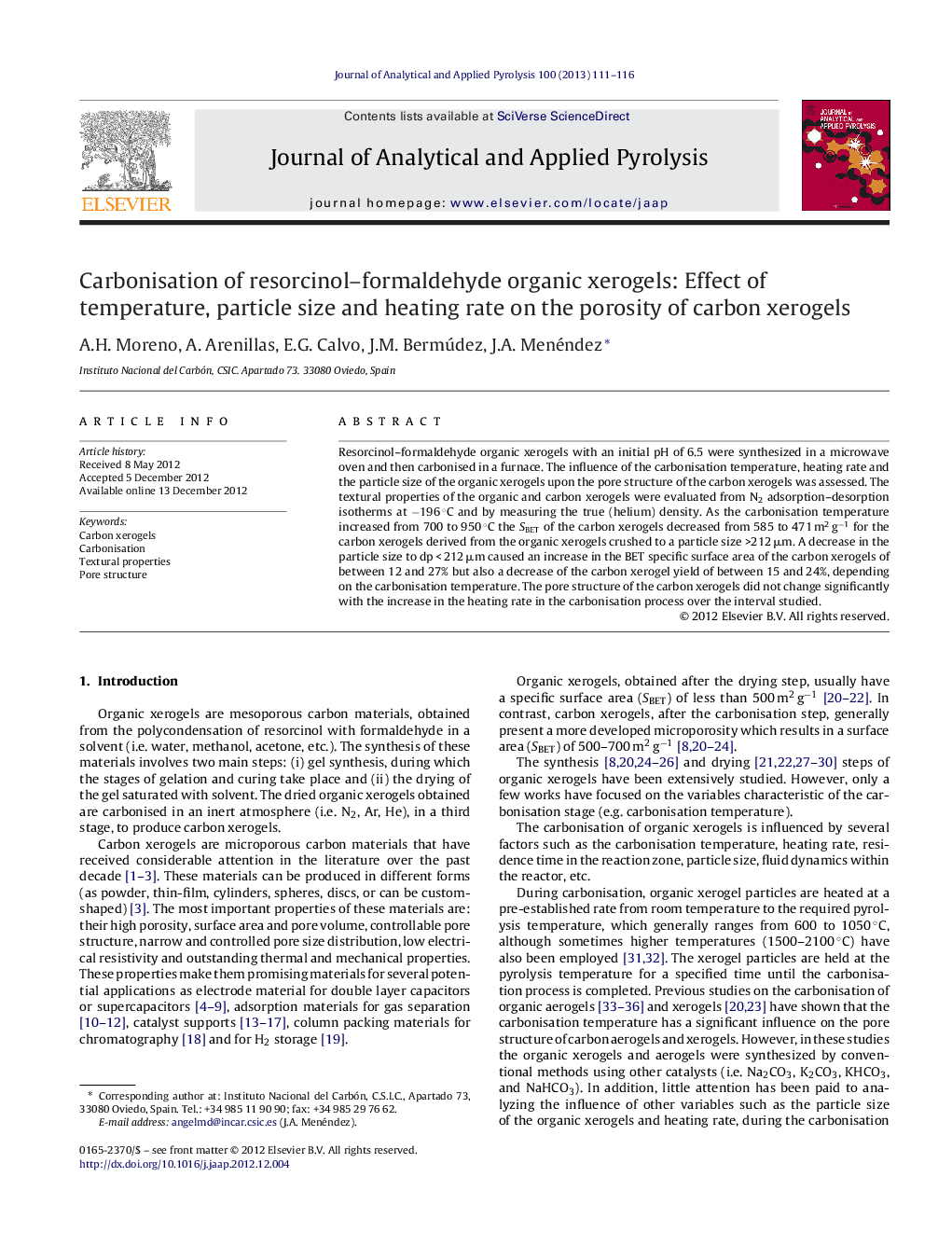| Article ID | Journal | Published Year | Pages | File Type |
|---|---|---|---|---|
| 1196920 | Journal of Analytical and Applied Pyrolysis | 2013 | 6 Pages |
Resorcinol–formaldehyde organic xerogels with an initial pH of 6.5 were synthesized in a microwave oven and then carbonised in a furnace. The influence of the carbonisation temperature, heating rate and the particle size of the organic xerogels upon the pore structure of the carbon xerogels was assessed. The textural properties of the organic and carbon xerogels were evaluated from N2 adsorption–desorption isotherms at −196 °C and by measuring the true (helium) density. As the carbonisation temperature increased from 700 to 950 °C the SBET of the carbon xerogels decreased from 585 to 471 m2 g−1 for the carbon xerogels derived from the organic xerogels crushed to a particle size >212 μm. A decrease in the particle size to dp < 212 μm caused an increase in the BET specific surface area of the carbon xerogels of between 12 and 27% but also a decrease of the carbon xerogel yield of between 15 and 24%, depending on the carbonisation temperature. The pore structure of the carbon xerogels did not change significantly with the increase in the heating rate in the carbonisation process over the interval studied.
► Carbonization of organic xerogels to carbon xerogels was studied. ► Carbonization produces a significant development of microporosity. ► Temperature affects the porous texture only when coarse particles are carbonized. ► Small particle sizes favours the surface area development but impairs the yield. ► Heating rate has not significant influence on the pore structure.
